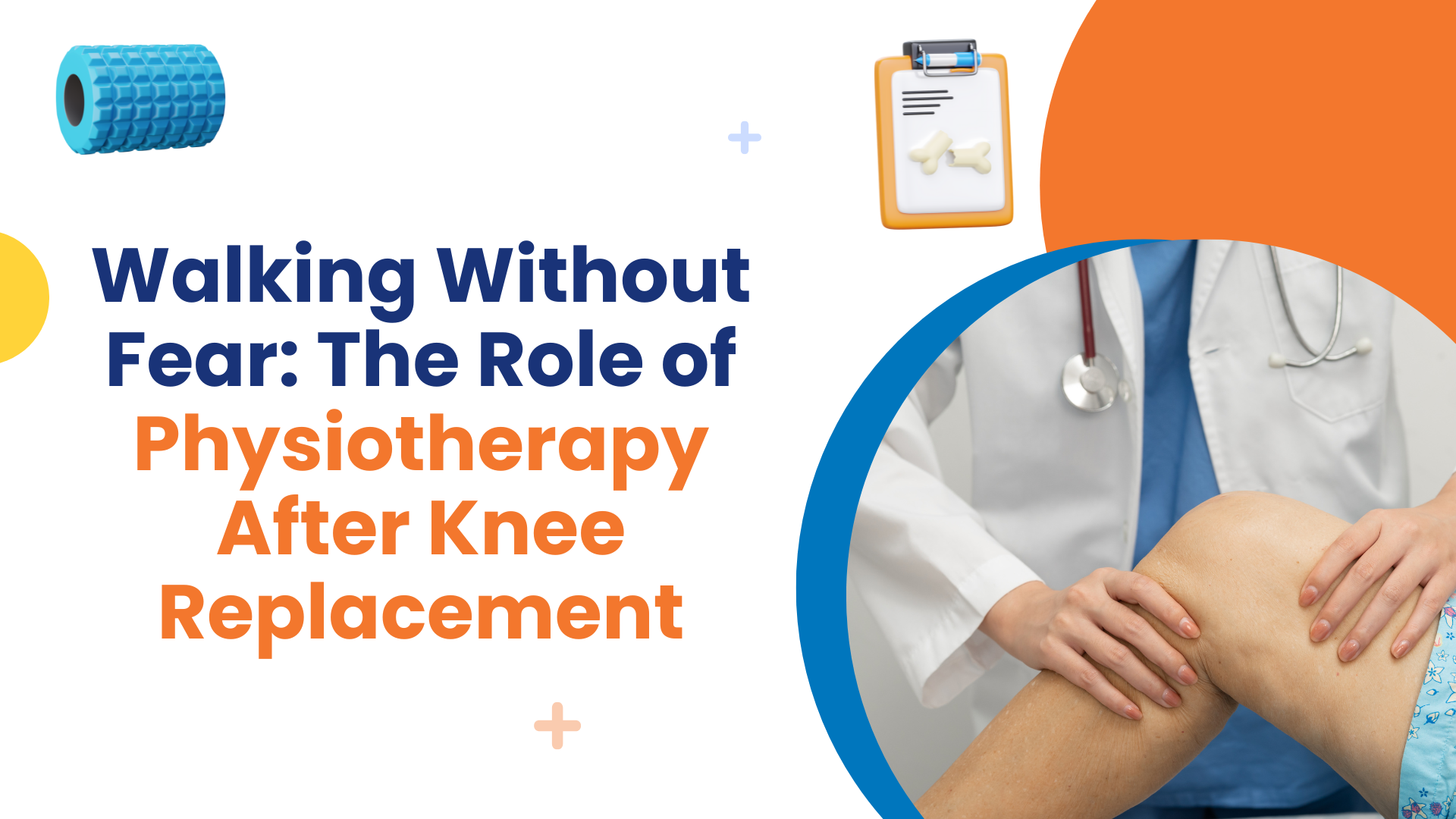Knee surgeries, such as knee replacement, are quite a transformative procedure that is aimed at restoring mobility by relieving pain. However, the recovery plan is not restricted to post-surgical medicines and interventions. Instead, it also includes physiotherapy for knee replacement. This non-invasive treatment is focused on helping people who have recently undergone knee replacement and are willing to regain mobility, strength, and balance. If you want to gain long-term health benefits, you are advised not to miss physiotherapy sessions after the surgery.
What is the role of physiotherapy after knee replacement?
Physiotherapy sessions after knee surgery, like knee replacement, focus more on regaining flexibility, range of motion, strength, and balance. This approach is helpful in minimizing various post-surgical complications, like blood clots, swelling, and stiffness. If advised, you can also go for Dry needling in Delhi to speed up the recovery.
Physiotherapy treatment for knee replacement comes with several benefits. Some of them have been listed below:
- Pain management: This treatment is helpful when it comes to alleviating pain after the replacement procedure. For this, some custom-made exercises are provided.
- Range of motion: After a knee replacement surgery, patients lose their mobility. However, physiotherapy is quite an effective option to restore flexibility and mobility.
- Muscular strength: By performing the targeted exercises and other therapies, the muscles of the affected area will be strengthened.
- Fewer complications: After this surgery, one can have certain complications, such as stiffness and deep vein thrombosis.
What are the phases of physiotherapy used after a knee replacement surgery?
To get extended benefits, an expert designs the sessions of physiotherapy after knee replacement and divides them into different stages. Here are the details:
Phase 1: Immediate phase after the surgery (days 1 to 7)
This physiotherapy session begins right after the knee replacement procedure. The objective of this phase is to control pain, reduce swelling, and prevent the buildup of blood clots. To achieve better results, physiotherapists use ankle pumps for blood circulation and gentle strengthening and bending of the knee. Lastly, some assistive devices, such as canes and walkers, are given to encourage mobility.
Phase 2: Early rehab phase (week 2 to 6)
In this phase, the main focus is on regaining muscular strength and joint mobility. When it comes to the objective of this phase, it is to improve knee stability and make the range of motion better. To achieve better outcomes, physiotherapists conducting physiotherapy after knee replacement use targeted exercises for hamstrings and quadriceps, gradual activities for weight-bearing, and some low-impact activities and exercises, like water therapy and cycling.
Phase 3: Advanced rehabilitation (week 7 to 12)
After reaching this phase, most patients start working on daily activities. However, building strength and endurance is still the main focus. In simple terms, the main goal of this phase is to prepare you for performing activities independently and enhance overall functionality. Again, this phase includes resistance training, proprioception, and balance exercises, and outdoor walking or treadmill walking to improve gait.
Phase 4: Maintenance phase (begin at 3 months)
As the name suggests, this phase is focused on maintaining the overall outcomes so that the patient can get back to their normal life. During the phase, physiotherapists will focus on joint health and long-term strength. It includes high-intensity strength training and exercises suggested by the physiotherapists.
What techniques are used by physiotherapists after knee replacement?
To ensure greater results and make every phase a success, a physiotherapist suggests several therapies, including dry needling in Delhi. Some of these include the following:
- Manual therapy: It includes soft tissue manipulation, joint mobilization, and stretching to address and fix issues, like scar tissue, joint stiffness, and mobility-related concerns. Speaking about the benefits, it includes stimulated blood flow for quicker recovery, improving flexibility, and reducing pain.
- Cryotherapy: In this therapy, cold temperature is used to reduce pain and inflammation. For this, experts use techniques such as cold compression and ice packs. Through this, swelling will be minimized, numbness will be reduced, and soreness will be improved.
Why does the patient commitment matter?
To ensure better outcomes, the dedication of the patient is very important. As per the expert physiotherapists, the overall effectiveness of the intervention depends on the commitment of the patients. This means every patient should stick to the routine and exercises suggested. In addition to this, they should not miss the follow-ups.
Takeaways,
Physiotherapy after knee replacement is a cornerstone when it comes to faster recovery. In addition to this, it is also important to ensure that a patient is regaining independence, strength, mobility, and more. In case you need expert guidance with the advanced procedures, you can connect with PHYSIO REVIVE. Here, you can connect with a team of qualified and certified physiotherapists and have bespoke recovery plans.
